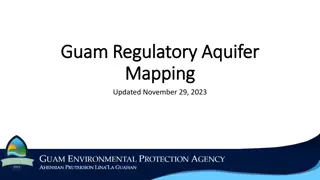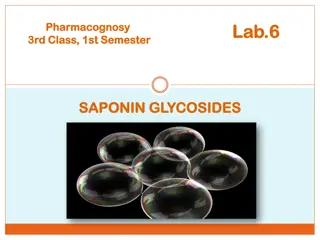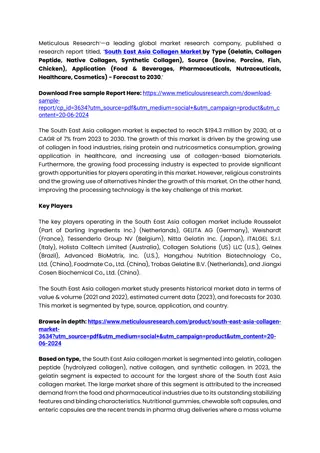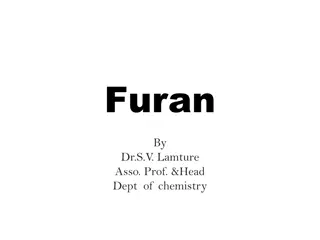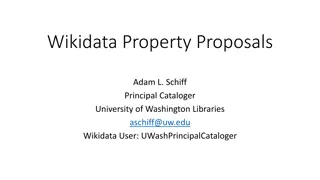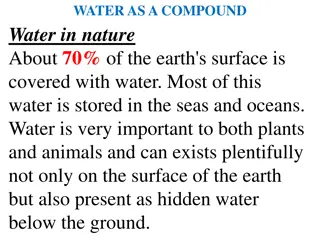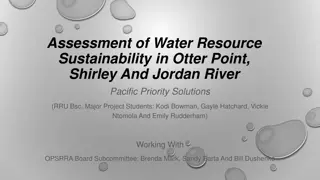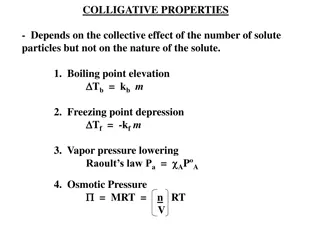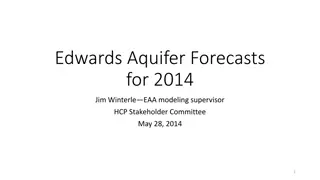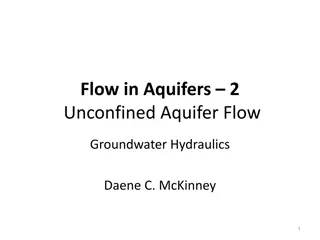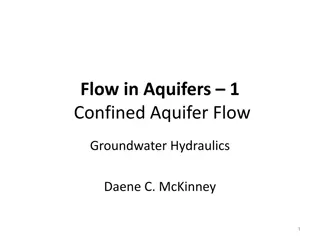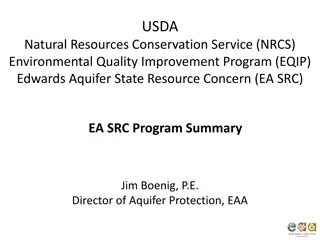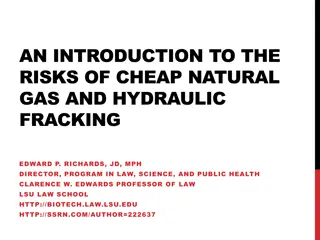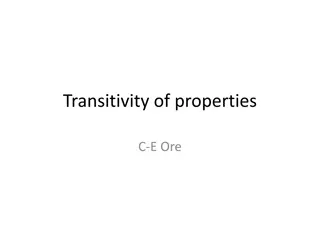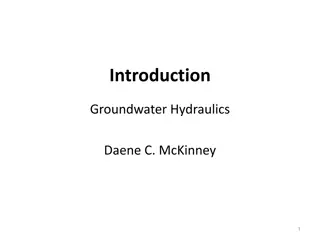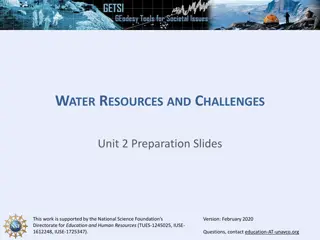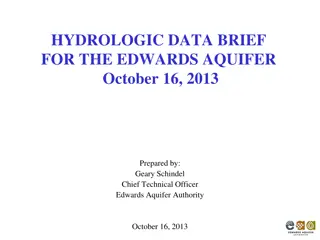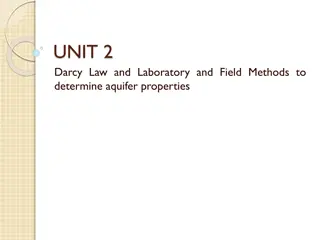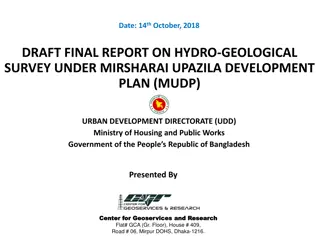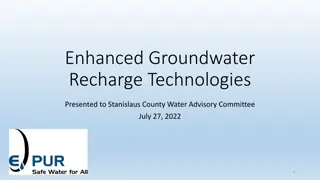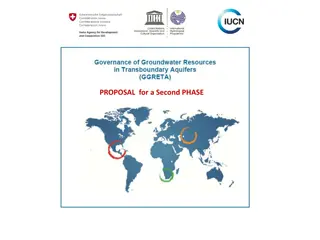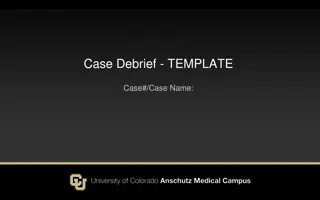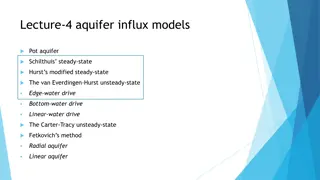Overview of Guam Regulatory Aquifer Mapping and Groundwater Protection
Guam's Regulatory Aquifer Mapping includes conflicting maps from USEPA, the Northern Guam Lens Study, and Groundwater Protection Zones, impacting land use regulations and water quality standards. Issues arise from inconsistencies in regulatory tools and language errors within the protection zones. Z
2 views • 19 slides
Understanding Critical Areas in Washington State: Planning, Designation, and Protection
Critical areas in Washington State, including wetlands, aquifer recharge areas, fish and wildlife habitats, frequently flooded areas, and geologically hazardous areas, are defined and protected to safeguard important ecological functions and values. The designation and protection of these areas invo
6 views • 21 slides
Understanding the Rule of Mixtures in Composite Materials
The Rule of Mixtures (ROM) is a weighted method for predicting the properties of composite materials, such as fiber-reinforced polymers (FRP). This method relies on assumptions regarding the homogeneity and properties of fibers and matrices. By combining volume fraction and properties linearly, the
5 views • 23 slides
Understanding Saponin Glycosides in Pharmacognosy: Properties and Applications
Saponin glycosides, found in various plants, are compounds with diverse benefits ranging from cholesterol regulation to potential anticancer properties. They form colloidal solutions in water and are used in soap manufacturing due to their unique properties. Additionally, saponins have bitter taste,
7 views • 18 slides
Proposed Changes to Guam's Toilet Facilities and Sewer Disposal Act
Current controversies surrounding residential lot sizes, lack of flexibility in existing laws, and rising nitrate levels have prompted the introduction of Bill 175-37 (COR) in Guam. The bill aims to address shortcomings in existing regulations by allowing the development of 1/6 acre lots with Type 4
4 views • 10 slides
Understanding Properties and States of Matter in Physical Science
Matter is made up of elements that cannot be broken down further. Different mixtures have distinct properties, such as solutions, colloids, and suspensions. Physical properties like viscosity and density can be observed without changing the material's composition. Chemical properties, like flammabil
2 views • 15 slides
South East Asia Collagen
Collagen, with its unique properties, has been extensively used in food processing industries. These properties are usually categorized into two groups. First, the properties associated with its gelling behavior, such as texturizing, thickening, gel formation, and water binding capacity, and second,
0 views • 2 slides
Guidelines for Handling Case Properties and Seized Assets in Legal Proceedings
This informative content discusses the handling of case properties involved in offenses, including seizure, custody, disposal, and coordination among government departments. It covers various aspects such as the types of case properties, custody procedures, provisions under Section 516-A Cr.PC, and
0 views • 8 slides
Understanding Furan and Thiophene: Structures, Properties, and Uses
Furan and Thiophene are important heterocyclic organic compounds with distinct structures and properties. Furan, a five-membered aromatic ring, is used in specialty chemical production and has unique physical properties. Thiophene, a sulfur-containing compound, finds applications in agrochemicals an
2 views • 8 slides
Classification of Elements and Periodicity in Properties: Overview and Evolution
The journey of understanding the classification of elements and periodicity in properties begins with early laws like the Law of Triads and Newland's Law of Octaves. Mendeleev's Periodic Law revolutionized the organization of elements, leading to the modern periodic table. Discoveries of eka-alumini
3 views • 32 slides
Understanding Physicochemical Properties of Drugs
The physicochemical properties of drugs play a crucial role in their pharmacological effects. These properties include physical and chemical characteristics that influence interactions with biomolecules. Solubility, partition coefficient, and dissociation constant are key factors affecting drug beha
1 views • 46 slides
Algebra Rules and Properties
Explore the fundamental rules and properties of algebra and indices, including commutative, associative, and distributive properties. Learn about negation, zero properties, and the zero factor property, illustrated with examples and common errors. Engage in activities to apply and test your understa
1 views • 21 slides
Understanding Wikidata Properties and Data Types
Learn about Wikidata properties and data types, their importance in structuring data, and how they are used to create statements and qualifiers in Wikidata. Explore the purpose of properties, their labels, descriptions, aliases, and data types such as items, strings, monolingual text, external ident
0 views • 26 slides
Understanding Physical and Chemical Properties of Matter
Explore the distinction between physical and chemical properties of matter in Chapter 2, Section 2. Physical properties can be observed without changing the substance's identity, such as color and density, while chemical properties require altering the substance to observe characteristics like react
5 views • 20 slides
Understanding Nonelectrolytes in Solutions
Physical properties of substances are classified into colligative, additive, and constitutive properties. Colligative properties depend on the number of particles in a solution and are similar for different nonelectrolytes. Additive properties are based on the total contribution of atoms, while cons
1 views • 14 slides
Water as a Compound: Essential Properties and Properties
Water, a vital element covering 70% of the Earth, is composed of hydrogen and oxygen. It has various physical and chemical properties, acts as a universal solvent, and plays crucial roles in nature. From boiling and freezing points to chemical reactions, water's significance is undeniable. Its sourc
0 views • 63 slides
D-Block Elements: Properties and Classification in Chemistry
Welcome to the Department of Chemistry at Kisan Veer Mahavidyalaya, Wai. Explore the Chemistry of Elements of the 3d series, focusing on d-Block Elements and Transition Elements. Learn about their electronic structure, colored ions, magnetic properties, oxidation states, and complex formation. Under
0 views • 34 slides
2020 Company Confidential - Add-Ons and Variable Properties Guidelines
This document provides guidelines for add-ons and variable properties within the context of the 2020 Company Confidential data. It covers various aspects such as variable validations, logic return types, export/import considerations, and the handling of accessory items. The content emphasizes the pr
0 views • 39 slides
Assessment of Water Resource Sustainability in Otter Point, Shirley, and Jordan River
This project focuses on creating a GIS map and central database to evaluate water resource sustainability in Otter Point, Shirley, and Jordan River communities. The objectives include identifying information gaps, barriers to water sustainability, aquifer studies, and assessing the new Water Sustain
0 views • 4 slides
Understanding Colligative Properties in Solutions
Colligative properties in solutions depend on the total concentration of solute particles present, impacting properties such as boiling point elevation, freezing point depression, vapor pressure lowering, and osmotic pressure. Boiling point elevation is directly proportional to the number of solute
1 views • 19 slides
Understanding Physical and Chemical Properties of Matter
Explore the distinction between physical and chemical properties of matter in Chapter 15, Section 2. Learn to classify properties such as color, flammability, odor, shape, taste, density, and more. Understand how physical properties can be observed without altering the substance's identity, while ch
0 views • 17 slides
Insights into Edwards Aquifer Forecasts and Risk Zones for 2014
This report delves into the Edwards Aquifer forecasts for 2014, examining scenarios based on previous dry years and risk zones for springs. It analyzes different cases with reductions in permitted pumping rates, along with the analysis of well water level changes, highlighting historical data and tr
0 views • 11 slides
Understanding Unconfined Aquifer Flow: Theory and Equations
Unconfined aquifer flow occurs above the water table with complexities in solving governing equations. Approximate solutions are derived for steady horizontal flow and Dupuit approximations in this type of aquifer.
0 views • 17 slides
Understanding Groundwater Flow in Aquifers
Groundwater flow in aquifers, whether confined or leaky, involves complex concepts like aquifer transmissivity, storativity, conductivity, Darcy's law, and continuity equations. Focusing on horizontal flow approximation and utilizing formulas for transmissivity and conductivity allows us to study th
0 views • 15 slides
Advocacy Campaign for Sustainable Wastewater Management in Texas Hill Country
An educational advocacy campaign by nonprofit organizations and citizens is promoting sustainable alternatives to direct discharge in the Texas Hill Country and Edwards Aquifer. The campaign aims to galvanize public support through strategic outreach activities, advocating for eco-friendly wastewate
0 views • 26 slides
Improving Agricultural Productivity and Environmental Sustainability in Texas
The USDA NRCS EQIP Edwards Aquifer State Resource Concern (EA SRC) program in Texas aims to enhance local agriculture productivity and environmental objectives by focusing on water quality, erosion reduction, efficient water usage, and addressing climate change impacts. The program provides voluntar
0 views • 11 slides
Understanding the Risks of Cheap Natural Gas and Hydraulic Fracking
This introduction delves into the multifaceted risks associated with the exploitation of cheap natural gas and hydraulic fracking. Covering climate risks, economic consequences of petro-states, direct GHG risks, and local environmental risks, the content underscores the complex challenges and implic
0 views • 8 slides
Understanding Transitivity of Properties in Typed Systems
Exploring the concept of transitivity in properties within a typed system, this content delves into explicit and possibly transitive properties, showcasing how properties relate to each other and how they can be implicitly or explicitly defined. Through examples and explanations, the content provide
0 views • 18 slides
Comprehensive Course on Material Properties and Science
Delve into the world of material properties and science with a course led by Professor Shyan-Lung Chung from the Department of Chemical Engineering at National Cheng Kung University. Explore topics ranging from atomic scale structures to mechanical properties and their applications, supported by opt
0 views • 10 slides
The Edwards Aquifer Water Management Challenges
The Edwards Aquifer in South-Central Texas faces significant water management challenges due to reduced recharge and water levels, impacting springs and species dependent on them. Stakeholders have struggled to develop a plan, facing obstacles such as cost concerns, opposition from agricultural comm
0 views • 15 slides
Understanding Groundwater Hydraulics and Hydrology
Explore the fundamentals of groundwater hydraulics and hydrology in this course, covering topics such as Darcy's law, aquifer testing, unsaturated flow, and more. Dive into practical applications and participate in a team project focusing on limiting hydraulic containment of contaminated aquifers. G
0 views • 25 slides
Challenges and Insights into Water Resource Management
Explore the critical issues surrounding water resources through a detailed examination of the High Plains Aquifer and Western Mountain Watershed. Delve into the impact of groundwater mining, climate change, and droughts on these vital water systems, and discover potential solutions and resources for
0 views • 21 slides
Hydrologic Data Brief for the Edwards Aquifer - October 16, 2013
Hydrological data report for the Edwards Aquifer on October 16, 2013, covering current water levels, spring flows, long-term changes, well readings, and spring discharges. The report includes trends over the last 10 days, deviations from historical averages, and water level updates for various wells
0 views • 11 slides
Understanding Darcy Law and Methods for Aquifer Property Evaluation
Darcy Law, introduced by Henry Darcy, defines the relationship between flow rate, head loss, cross-sectional area, and flow path length in porous media like aquifers. By conducting experiments and measuring hydraulic conductivity, Darcy Law allows estimation of groundwater velocity and flow characte
0 views • 49 slides
Hydro-Geological Survey Report in Mirsharai Upazila
This draft final report presents the findings of a hydro-geological survey conducted under the Mirsharai Upazila Development Plan by the Urban Development Directorate in Bangladesh. The report includes digital elevation models, aquifer architecture, isopach maps, cross-sections, aquifer frameworks,
0 views • 27 slides
Enhanced Groundwater Recharge Technologies Overview
This presentation on Enhanced Groundwater Recharge Technologies covers a range of topics including background information, local assessments, groundwater recharge zones, and opportunities in Stanislaus County. It delves into various methods such as drywells, spreading basins, and aquifer storage, as
0 views • 9 slides
Enhancing Groundwater Governance and Cooperation in Phase 2 of GGRETA Project
The proposed Phase 2 of the GGRETA Project aims to improve groundwater governance, develop gender-responsive water approaches, and enhance cooperation on water security in countries like El Salvador, Honduras, South Africa, and others. The objectives include improving resource knowledge, fostering c
0 views • 5 slides
Standard Aquifer Case Debrief Template
This template serves the goal of standardizing Aquifer case debriefs, including reviewing case objectives, chief complaint, initial differentials, history, physical exam components, pertinent schemas, medical knowledge review, clinical skills, clinical reasoning, differentials rationale, and managem
0 views • 11 slides
Understanding Aquifer Influx Models and Solutions
Explore various aquifer influx models such as Schilthuis, Hurst's modified steady-state, and the van Everdingen-Hurst unsteady-state. Learn about the challenges with the Schilthuis model and how to determine unknown constants. Dive into solutions and examples to enhance your understanding.
0 views • 23 slides
Entity-specific Rankings of Knowledge Base Properties
Towards entity-specific rankings of knowledge base properties, this research explores the problem of property ranking for entities based on their attributes and properties. Various applications in knowledge base curation and natural language generation are discussed, along with related work in entit
0 views • 26 slides
